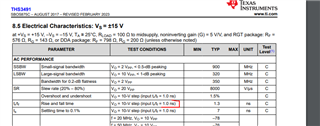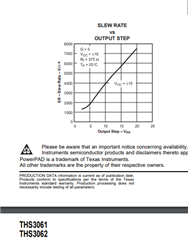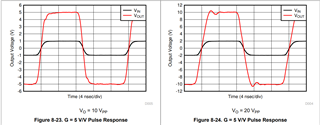Other Parts Discussed in Thread: THS3061,
slew rate of THS3491 is 8000 V/us ((20% – 80%) and slew rate of THS3061 is 7000 V/us for 20V-step and 5700 V/us for 10V-step (25% to 75% level) which indicates that THS3491's rise time shall be lower than the latter opAmp, which surprisingly is not and THS3491 has 1.3ns rise time and THS3061 has 1ns rise time.
Could you please elaborate on why despite the rule of ''higher slew rate results in lower rise time'', the rise time of THS3491 is more than THS3061? and why there are various conditions in reporting slew rate and what do they stand for?




